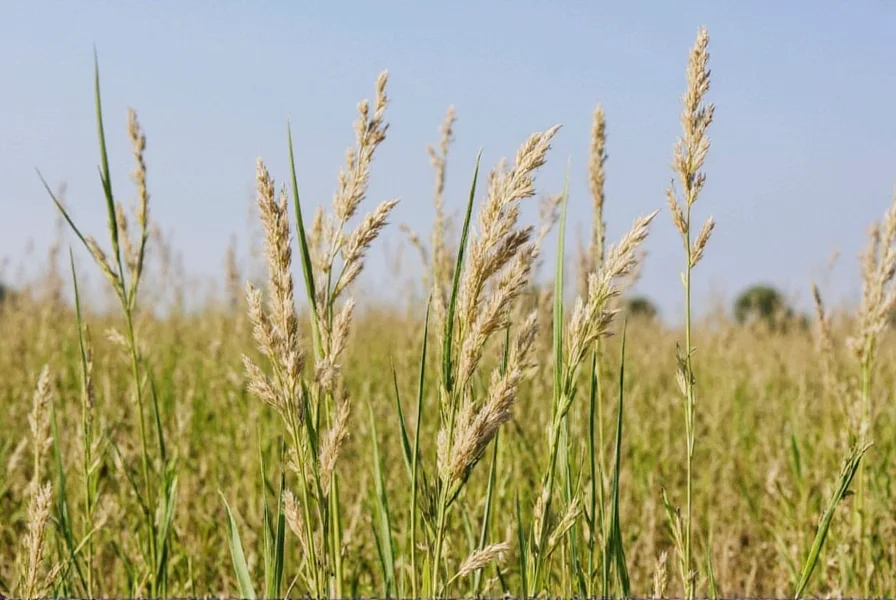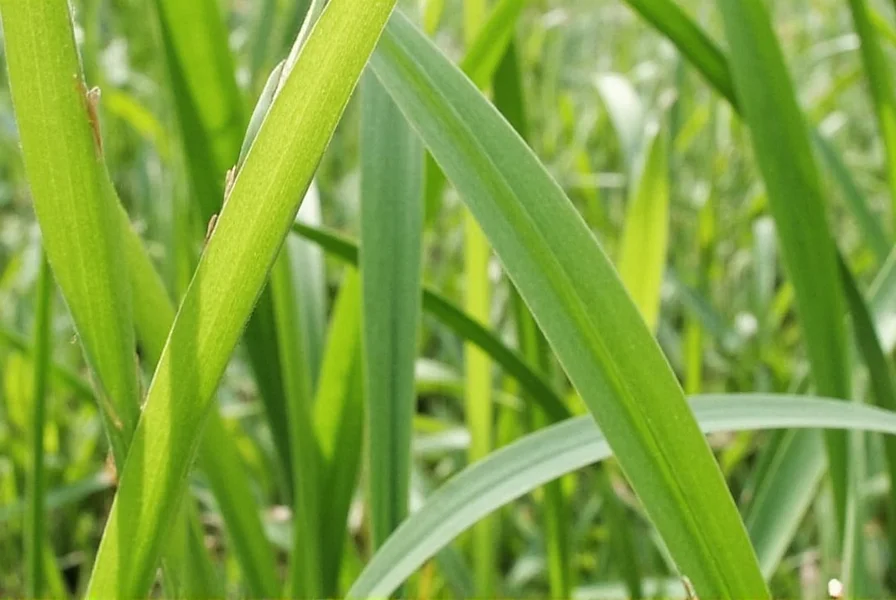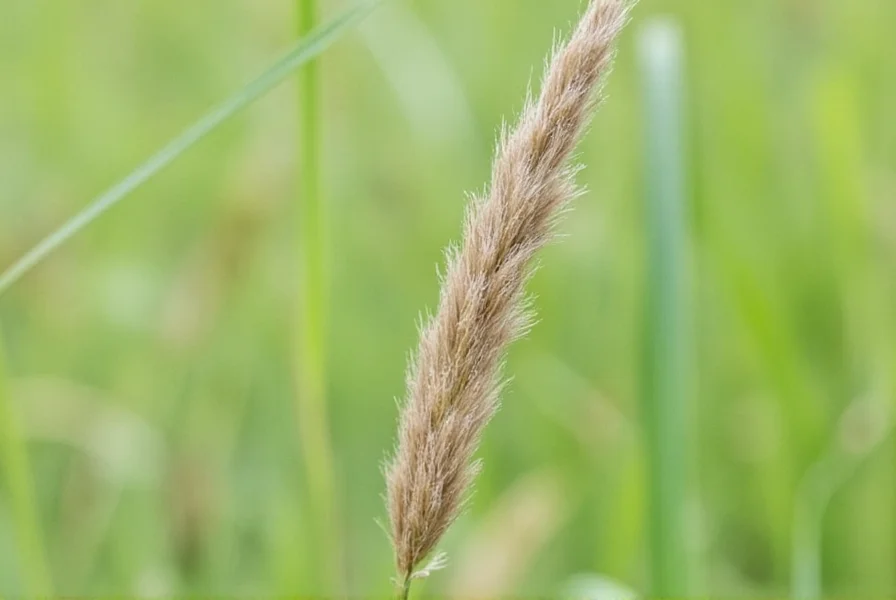Many gardeners and plant enthusiasts search for "clove grass" expecting a specific plant, only to discover confusion between similar-sounding botanical names. This comprehensive guide clarifies the identity, characteristics, and cultivation of what's commonly called clove grass, addressing frequent misconceptions about this intriguing plant.
What Exactly Is Clove Grass?
The term "clove grass" creates significant confusion in horticultural circles. Botanically speaking, there is no plant officially classified as "clove grass." Instead, this common name typically refers to Potentilla indica, also known as Indian mock strawberry or Duchesnea indica. This perennial plant belongs to the Rosaceae family and earned the "clove" descriptor due to the distinctive clove-like scent emitted when its leaves are crushed.
Unlike true grasses (Poaceae family), clove grass features trifoliate compound leaves resembling clover but with锯齿状 edges. Its yellow flowers produce strawberry-like fruits that are technically edible but generally flavorless compared to true strawberries. Understanding this distinction between clove grass vs clover is essential for proper plant identification and care.
Botanical Classification and Common Names
Scientifically classified as Potentilla indica, this plant has accumulated numerous common names across different regions:
| Scientific Name | Common Names | Origin |
|---|---|---|
| Potentilla indica | Indian mock strawberry, False strawberry, Clove grass | Eastern Asia |
| Dianthus species | Clove pink, Sweet William | Europe/Asia |
It's crucial to note that some gardeners mistakenly apply the "clove grass" label to certain Dianthus species (carnations) which have a clove-like fragrance but are completely different plants. This confusion between clove grass plant identification and similar species represents one of the most common gardening misunderstandings.
Physical Characteristics and Identification
Accurate identification of clove grass requires attention to specific botanical features:
- Leaves: Trifoliate (three leaflets), toothed margins, green to slightly reddish
- Flowers: Five-petaled, bright yellow, approximately 1-1.5 cm in diameter
- Fruits: Red, strawberry-shaped but smaller with dry, flavorless flesh
- Stems: Creeping runners that root at nodes, forming dense mats
- Scent: Distinctive clove aroma when leaves are crushed
When attempting to identify clove grass in your garden, examine the leaf structure closely. Unlike white clover (Trifolium repens) which has smooth leaf edges and produces white flower heads, clove grass features serrated leaf margins and distinctive yellow flowers. This differentiation is vital for gardeners seeking to understand clove grass vs clover differences in their landscapes.

Habitat and Growing Requirements
Native to eastern Asia, clove grass has naturalized in many temperate regions worldwide. It thrives in conditions that make it both a desirable ground cover and sometimes considered a weed:
- Light: Partial shade to full sun (performs best with morning sun and afternoon shade)
- Soil: Moist, well-drained soil rich in organic matter; tolerates various pH levels
- Water: Moderate watering needs; drought-tolerant once established
- Temperature: Hardy in USDA zones 4-9; dies back in winter in colder climates
- Propagation: Spreads via runners and seeds; can become invasive in ideal conditions
Gardeners interested in growing clove-scented plants should note that this species prefers similar conditions to true strawberries but demonstrates greater shade tolerance. Its ability to form dense mats makes it an excellent ground cover for difficult areas where other plants struggle to establish.
Practical Uses and Benefits
While not as commercially valuable as true strawberries, clove grass offers several practical applications:
- Ornamental: Attractive ground cover with yellow flowers and red fruits
- Erosion control: Effective for stabilizing soil on slopes and banks
- Wildlife value: Provides food for birds and small mammals
- Medicinal history: Traditional use in some cultures for minor skin irritations
- Sensory garden: Valued for its distinctive clove-like fragrance when brushed against
Unlike many invasive species, clove grass generally coexists peacefully with other garden plants without aggressively choking them out. Its moderate growth habit makes it suitable for rock gardens, between stepping stones, or as a lawn alternative in shaded areas where traditional grasses struggle to grow.

Common Misconceptions Clarified
Several persistent myths surround clove grass that deserve clarification:
- Myth: Clove grass is a type of clover
Fact: Despite similar leaf structure, they belong to different plant families (Rosaceae vs. Fabaceae) - Myth: The fruits are delicious like true strawberries
Fact: Fruits are technically edible but generally bland and dry - Myth: All clove-scented plants are called clove grass
Fact: Many plants have clove-like scents but belong to different species - Myth: Clove grass requires special care different from other ground covers
Fact: Its care requirements resemble those of many common garden plants
Understanding these distinctions helps gardeners make informed decisions about whether to encourage or manage this plant in their landscapes. For those researching how to identify clove grass, examining the flower color (yellow vs. white/pink for clover) provides the most reliable visual differentiator.
Growing Tips for Gardeners
Whether you're intentionally cultivating clove grass or managing its presence in your garden, these practical tips will help:
- Planting: Space plants 12-18 inches apart for quick coverage; best planted in spring or fall
- Watering: Water regularly during establishment phase, then reduce to once weekly
- Fertilizing: Apply balanced fertilizer in early spring; avoid excessive nitrogen
- Pruning: Trim back runners to control spread; remove dead foliage in late winter
- Propagation: Easily propagated by dividing rooted runners in spring
- Winter care: Mulch lightly in colder climates to protect crowns from freeze-thaw cycles
For gardeners seeking clove grass plant care instructions, remember that this species prefers consistent moisture but cannot tolerate waterlogged conditions. In containers, ensure excellent drainage and use a high-quality potting mix amended with compost for optimal growth.
Conclusion
Clove grass (Potentilla indica) represents a fascinating example of how common names can create botanical confusion. By understanding its true identity, distinguishing characteristics, and growth requirements, gardeners can make informed decisions about incorporating this clove-scented plant into their landscapes. Whether valued as an attractive ground cover, appreciated for its sensory qualities, or managed as an opportunistic volunteer, recognizing what clove grass actually is helps bridge the gap between common naming conventions and botanical accuracy.
Is clove grass the same as clover?
No, clove grass (Potentilla indica) and clover (Trifolium species) are completely different plants. While both have trifoliate leaves, they belong to different plant families (Rosaceae vs. Fabaceae), produce different colored flowers (yellow vs. white/pink), and have distinct growth habits and scents.
Can you eat clove grass berries?
Yes, the berries of Potentilla indica (clove grass) are technically edible but generally not recommended for consumption. They're dry, flavorless, and lack the sweetness of true strawberries. While not toxic, they offer little culinary value compared to cultivated strawberries.
Why does clove grass smell like cloves?
Clove grass emits a clove-like aroma when its leaves are crushed due to specific volatile compounds in the plant tissue. This scent characteristic helps distinguish it from true clover, which lacks this distinctive fragrance and is one of the key identification features for gardeners learning how to identify clove grass.
Is clove grass invasive?
Clove grass can spread aggressively through runners and self-seeding in favorable conditions, but it's generally not considered highly invasive. Unlike some aggressive ground covers, it typically doesn't choke out established plants and can be easily managed with regular edging. Its growth habit makes it suitable as a ground cover in appropriate settings.
How do I grow clove grass in my garden?
To grow clove grass successfully, plant in partial shade to full sun in moist, well-drained soil. Space plants 12-18 inches apart, water regularly during establishment, and apply balanced fertilizer in spring. It spreads via runners, so provide enough space or install edging to contain its growth. This low-maintenance plant makes an excellent ground cover for challenging areas where other plants struggle.
Frequently Asked Questions About Clove Grass
Is clove grass the same as clover?
No, clove grass (Potentilla indica) and clover (Trifolium species) are completely different plants. While both have trifoliate leaves, they belong to different plant families (Rosaceae vs. Fabaceae), produce different colored flowers (yellow vs. white/pink), and have distinct growth habits and scents.
Can you eat clove grass berries?
Yes, the berries of Potentilla indica (clove grass) are technically edible but generally not recommended for consumption. They're dry, flavorless, and lack the sweetness of true strawberries. While not toxic, they offer little culinary value compared to cultivated strawberries.
Why does clove grass smell like cloves?
Clove grass emits a clove-like aroma when its leaves are crushed due to specific volatile compounds in the plant tissue. This scent characteristic helps distinguish it from true clover, which lacks this distinctive fragrance and is one of the key identification features for gardeners learning how to identify clove grass.
Is clove grass invasive?
Clove grass can spread aggressively through runners and self-seeding in favorable conditions, but it's generally not considered highly invasive. Unlike some aggressive ground covers, it typically doesn't choke out established plants and can be easily managed with regular edging. Its growth habit makes it suitable as a ground cover in appropriate settings.
How do I grow clove grass in my garden?
To grow clove grass successfully, plant in partial shade to full sun in moist, well-drained soil. Space plants 12-18 inches apart, water regularly during establishment, and apply balanced fertilizer in spring. It spreads via runners, so provide enough space or install edging to contain its growth. This low-maintenance plant makes an excellent ground cover for challenging areas where other plants struggle.











 浙公网安备
33010002000092号
浙公网安备
33010002000092号 浙B2-20120091-4
浙B2-20120091-4